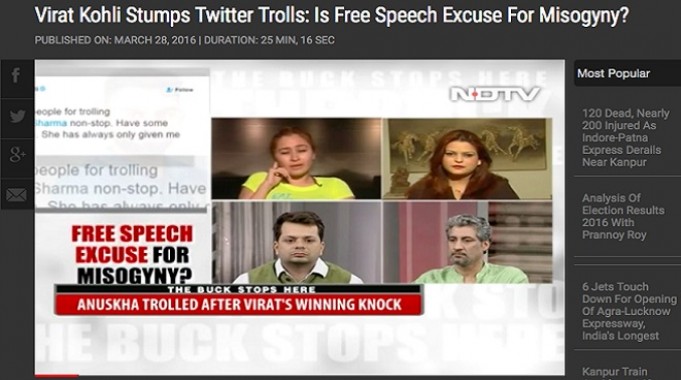Twitter: the Troll Kingdom
The Eternal Kingdom of Soulless Trolls wouldn’t be a bad description for Twitter. Infamous for its rabid trolls, Twitter has gone from bad to worse and has forced many to quit in desperation. By Twitter’s own admission, it has had a terrible track record of handling such behaviour. But what is it with Twitter that it has an almost inseparable relationship with trolls? This article tries to find the reasons.
Twitter’s stated mission is to give everyone the power to create and share ideas and information instantly, without barriers. When in 2008 Ariel Waldman, one of the earliest Twitter stars, went public about Twitter’s ineffective handling of abusers and trolls, Twitter founder Biz Stone argued that “Twitter is a communication utility, not a mediator of content,”. Twitter has ever since embedded this into its working philosophy.
Refusing to regulate content
Twitter has acknowledged that it has evolved into something much more than a communication utility. Yet, it has maintained its earlier stand of not moderating content. Twitter argues that it merely “provides a platform for its users to share and receive a wide range of ideas and content, it ...greatly values and respects …users' right to expression”...and “users are solely responsible for the content they publish and are often in the best position to resolve disputes amongst themselves’’. Because of these principles, Twitter does not actively monitor users' content.
In essence, Twitter is akin to a media house which takes no responsibility whatsoever for its content nor does anything to regulate it. Whether it is ISIS recruiters calling for people to be beheaded or a young lady in Britain asking for money for her father’s funeral, as far as Twitter is concerned, they are all the same: social broadcasters using a communication utility.
The free speech wing of the hate speech parties
Twitter has in the past talked about being the “free speech wing of the free speech party.” Such an open commitment to unrestricted speech has deterred, if not provided an excuse, for Twitter not to take stronger measures to combat harassment.
Twitter allows “users to post content, including potentially inflammatory content.” Moreover,“It does not screen content or remove potentially offensive content. As a policy, Twitter does not mediate content or intervene in disputes between users.”
This has not been without consequences for the company. There have been reports that Disney and Salesforce.com both backed away from bidding for Twitter in part because of its problem with offensive content.
Indulgence towards fake and parody accounts
While Facebook and Instagram try to weed out fake accounts in keeping with their one account per user policy, Twitter goes the other way and makes them part of the account policy, thereby legitimizing them. It openly allows for fake and parody accounts to be made as long as they are ‘expressly’ declared to be so.
Twitter puts the onus on general users to verify the source of the tweet and authenticity of an account. On a platform which runs like a live wire, this is akin to storing petrol near an open kiln and asking workers to be careful.
Recently, an IIM student who sent an invitation to the fake account of Abhishek Bachchan became public. The user names, @juniorbachchan and @juniorbacchhan, are so similar that but for the authentication tick, they practically look the same. On any other platform, this would have resulted in deletion or suspension of the fake account. In the case of Twitter, no action was taken.The account continues to be active as it doesn’t go against the Twitter Terms.

Virender Sehwag’s fake account has also been in the news for some witty comments. It also features the same display pic and similar looking Twitter handles, ie @VirenderrSehwagand@virendersehwag.
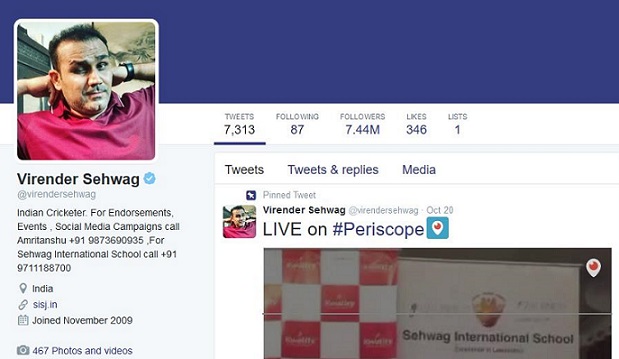
Below are two parody accounts being run by what looks like the same person as mentioned in Virender Sehwag’s authentic Twitter account. Even the contact numbers given are the same, one for an authentic account and the other a parody account; both are probably managed by the same person.
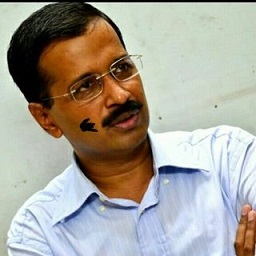
Parody of Parody,Troll Language in Politics has begun. Movie jaldi badlega. For Endorsements Contact Amritanshu 7011966001
- New Delhi, India
- Joined June 2011
- Born on April 01

Barkha Rani JamkeBakBakKartihai. (Parody Account) For Endorsements Contact Amritanshu 9873690935
- Modi Occupied India
- Joined June 2016
While parody accounts mention expressly that they are parodies, fake accounts are mostly outright imaginations, either manual or bot made. Some parody accounts are prominent tweeters and major influencers, sometimes even more than the real ones. The actual number of fake/parody accounts on Twitter is unknown. Fake accounts are used to boost followers and feign popularity as well.
Facebook in contrast encourages users to report accounts that represent fake or fictional people, pets, celebrities or organizations. Parody accounts which impersonate people aren't allowed on Facebook.
In 2014 the BBC reported that Instagram, owned by Facebook, routinely removes accounts to limit spam and prevent users buying followers to appear more popular. In the 2014 Instagram "purge", Justin Beiber lost over 3.5 million fans overnight when it axed a large group of accounts. Instagram's own account on the site lost 18,880,211 followers. Rapper Akon reportedly lost 56% of his followers in the cull. One account, chiragchirag78, lost 99% of his followers -3,660,460 - before it itself was deleted. Most users were not happy about this move but a year later Facebook did the same.
There have been incidents involving fake accounts such as a fake #EndFathersDay campaign revealed to have been orchestrated by 4chan users posing as female social justice activists on Twitter, caught not by Twitter, but by counter activists.
Going by its track record, it would not be completely wrong to say that fake and parody accounts are integral to Twitter. On other platforms, the routine clearances weed out a good many. On Twitter, they thrive.
Anonymity encourages nastiness
Twitter was a great democratic experiment to begin with. Totally unknown strangers were enabled to contribute to discussions using a simple reply - a very powerful feature which should have enriched the discussions. Ironically, this has come to be used by anonymous users to shower abuse on people expressing counter opinions, to stifle thought and buy silence.
The anonymity issue on Twitter is a partial fallout of its fake, parody and commentary accounts policy, all of which promotes anonymity one way or the other. While impersonation is expressly not allowed, outright fake and parody accounts do not face any threats from Twitter. The anonymity problem arises not only from its account policy, but also from the fact that those interacting through tweets are more often than not unknown to each other. This opens the floodgates of inhibition and what follows is the free expression of what can only be termed unprocessed crap.
The net effect is that Twitter brings together many real, authenticated and credible users of public stature with experiences and insights to share, alongside the teeming anonymous millions who are free to do whatever they please.
The nature of interface and interactions
The lack of choice: Who can follow? Who can mention? Anyone and everyone. Twitter allows users to make their profiles Public or Protected. But choice doesn’t really exist, as will become clear from the following:
Setting tweets as Protected allows a user to receive requests when new people want to follow. Users with Public tweets do not have the option to approve followers and their tweets are visible to everyone. While protected accounts give protection, it severely limits the reach.
Twitter allows users to get verified accounts by following some very easy steps for verification, one of the requirements being that, tweetsneedto be set as public. Just for a recall, authentication is a necessity because Twitter allows fake and parody accounts and even encourages them.
Being Public on Twitter, is an open invitation to nuisance makers. Anyone and everyone can taunt any public account through @mentions tweets. On Twitter, blocking or muting removes the mentions from the users’ notifications page alone; it doesn’t stop anyone from making mentions. It just doesn’t get displayed in the notifications of the user.
Not accepting Terms of Service/Twitter Rules
In most places around the world, and specifically in India, “for legal purposes, speech would not attract penalties until it incites a real threat of violence and civic disorder. However, the law is not sufficiently equipped to deal with speech that does not incite violence, but causes psychological damage.”
This is why the victims of online abuse and harassment become all the more dependent on website operators like Twitter to help them out in times of distress and continued taunts. The legal aspects relating to online harassment and abuse etc, has not evolved and nor is the law and order machinery attuned to respond to such issues.
Twitter’s failure to accept breach of Terms of Service/Twitter Rules is all the more frustrating in this context.Twitter in principle has a nice sounding policy for blocking or suspending accounts that violate the Twitter Rules. Twitter also claims that it suspends or blocks accounts for abusive tweets orbehaviour, if it has been reported asviolating the Rules surrounding abuse.
But in practice Twitter fails its users miserably. Repeatedly, in numerous cases where the Terms of Service and Twitter Rules have been found violated by the victims of abuse, Twitter not only finds no violation but also asks the complainant to take steps to adapt themselves to such behaviour, such as ignoring the abuser or muting/blocking them. The famous and more popular accounts often get heard when they threaten to quit.
A survey conducted by Buzzfeed amongst its Twitter audience, found that in only 56 instances out of roughly 2,700 people surveyed did Twitter delete an offending account or a tweet that violated its own rules.
The abusive behaviour and harassment, which has come to pass off as normal on Twitter today, is because of this high tolerance for reported abusive behaviour. Most people filing reports are frustrated about the lack of response. The absence of fear of any action or retribution whatsoever emboldens the many trolls to carry on with their abusive rampage.

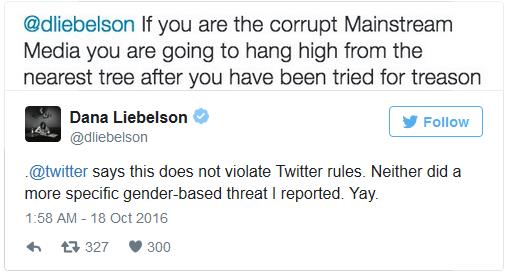
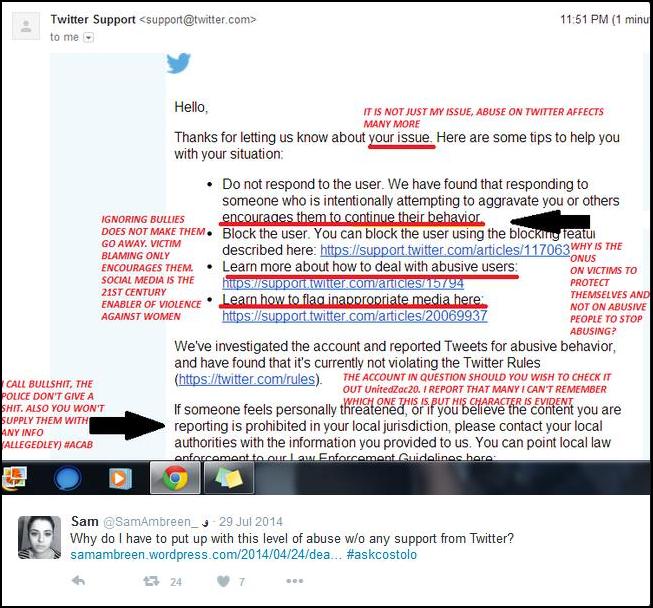
The Block Game
Twitter’s advice to deal with most things wrong on its platform is very simple.
- Consider the context
- Still don’t like it? Mute, block and ignore
The outcome of blocking an account is that any @replies or mentions that the blocked user sends will not appear in the mentions tab of the blocker. A blocked person will still be able to see tweets if they navigate to a profile page by logging out.
It should be noted that blocked users can still re-tweet your tweets and any @replies or mentions will still be visible to everyone else - they just don't appear in the timeline of the one who blocked. Blocking only acts to insulate the user from knowing about the directed vitriol. A blocked user can still use @mentions as well as report the blocker itself. It is not the person who gets blocked who is being penalised but the blocker whose freedom gets limited. The whole exercise of blocking and muting doesn’t mean anything in practice, other than putting the person under attack in a bubble wrap of self-assurance.
Altering many of this might alter Twitter as we have come to know it. But a very basic step which could go a long way







